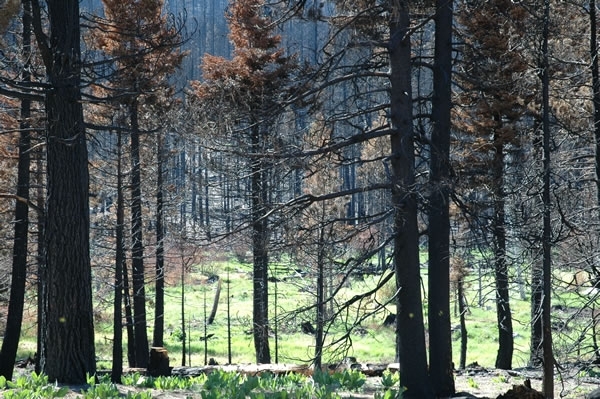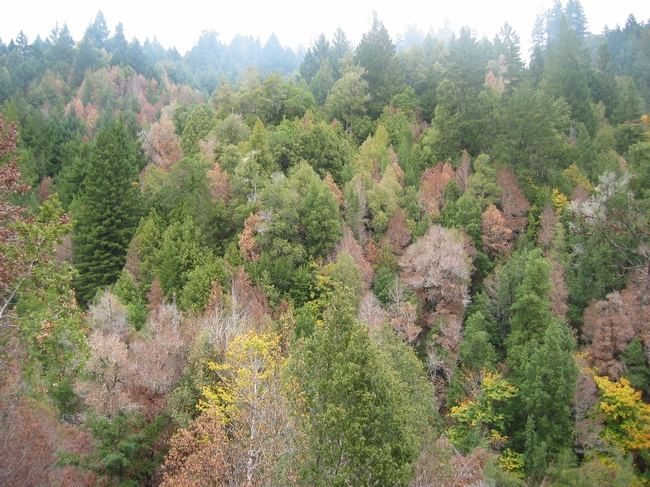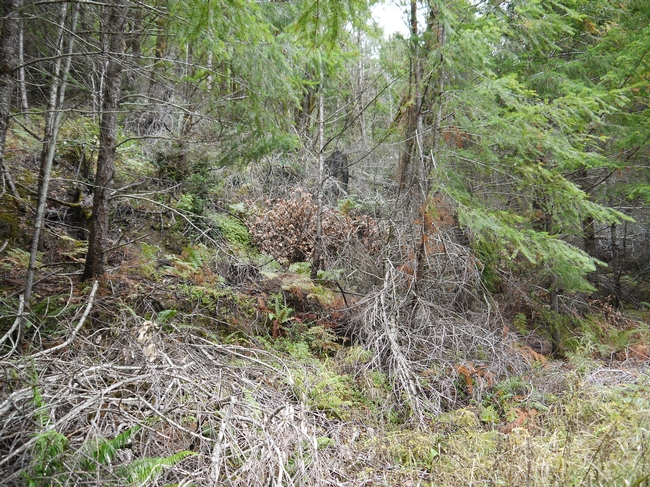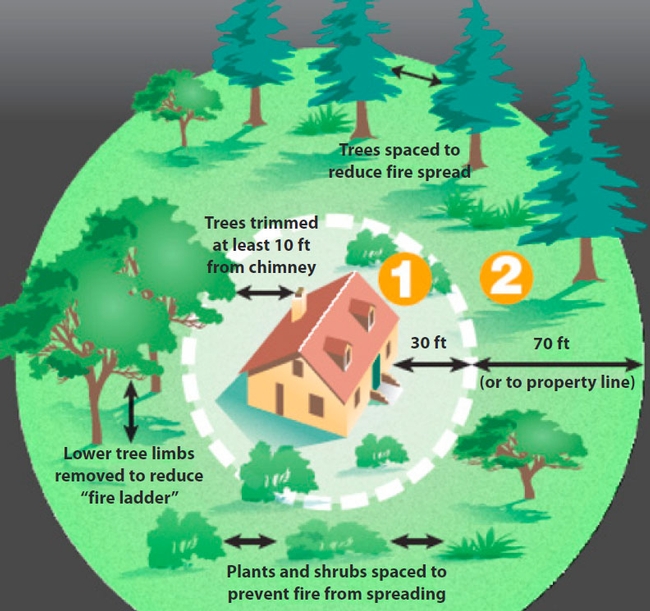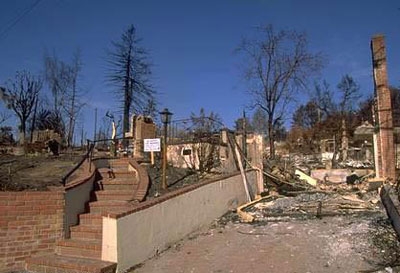Posts Tagged: wildfire
Climate change pushes West into a fire-prone future
A paper that examined climate change's likely effects on global fire patterns predicts the West will see more wildfire, said an article by Bettina Boxall in the Los Angeles Times.
The lead author of the paper, published Tuesday in the journal Ecosphere, was Max Moritz, UC Cooperative Extension specialist in the Department of Environmental Science, Policy and Management at UC Berkeley. Moritz, a wildfire expert, and his colleagues concluded that by the end of the century, much of the world will experience more wildfire than it does now.
Rising temperatures lengthen the fire season and dry out vegetation, making it more flammable. More rain could increase plant growth, producing more fuel to burn. In other areas, climate change may reduce fire. More rain in the tropics could decrease fire; less rain in other areas may reduce fuel levels and stunt plant growth, cutting the fire potential.
“Fire is not going anywhere,” Moritz said. The study results, he said, emphasize the need “to rethink how we live with fire and take it more seriously.”
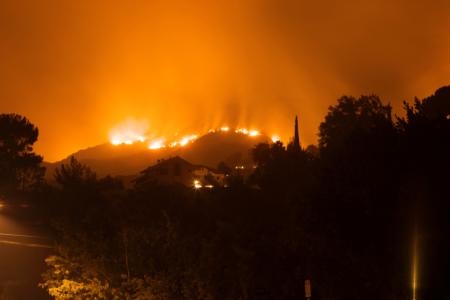
Climate change likely means more fire for the West.
UCCE supports Tahoe fire awareness week and Oroville nutrition decathlon
As part of Tahoe Fire Awareness Week, May 26 to June 3, Tahoe Basin fire agencies and partners, including Tahoe Regional Planning Agency and the University of California and Nevada Cooperative Extensions, are sponsoring a series of free webinars to help individuals and communities learn how to become more fire adaptive, reported the Record-Courier. Each webinar will be held from noon to 1 p.m. and will be recorded and archived for later viewing.
“With 2012 shaping up to be a high risk year for wildfires, the more people can prepare to survive the threat the better we all will be,” said Susan Kocher, University of California Cooperative Extension advisor, natural resources.
Kocher speaks in session three of the seminar series on May 30 about defensible space landscaping. The session also includes a talk by Wendy West, UC Cooperative Extension program representative, natural resources, titled "Learning how to garden at Lake Tahoe."
See the UCCE Lake Tahoe Basin Wildfire Awareness Week website for more details and links to the webinars.
Nutrition Decathlon
UC Cooperative Extension in Butte County offers local schools a "Nutrition Decathlon," a full-day nutrition and physical activity program, reported the Oroville Mercury-Register.
UCCE is beginning its Nutrition Decathlon season, hosting activities at schools that are making changes on their campuses, said Jona Pressman, UCCE program manager, nutrition.
"To participate, they need to be making significant changes with physical activity and nutrition," Pressman said.
At Helen Wilcox School last Friday, students ran, jumped, balanced on beams, tossed balls into nets, hopped in sacks, ducked through hoops, balanced bean bags on their heads, crawled through tubes, did pushups and lifted slight weights, reported Barbara Arrigoni, Mercury-Register staff writer.
Sudden oak death may increase wildfire fuel
Research by UC Cooperative Extension staff in Humboldt County shows that infection and oak mortality are only the beginning of the story, as the disease may increase forest fuels and put infested stands at higher risk of severe wildfire.
UC Cooperative Extension forest advisor Yana Valachovic, with assistance from Humboldt State University’s Forestry Department and CAL FIRE, found that in Douglas-fir-tanoak forests where high hardwood mortality is related to SOD, fuels can build up to hazardous levels on the forest floor over time. Their research documented fuels buildups in infected areas that could increase a wildfire’s flame length by 3 to 4 feet and double a wildfire’s rate of spread, depending on how much time has elapsed since initial infection.
Likewise, the increased fuels on the forest floor can take a long time to break down, posing a long-term fire hazard and additional risks to firefighters.
“The disease creates a hazardous fuels situation that is passed on to firefighters during wildfire," says Valachovic. "They must combat blazing downed trees, patches of increased winds and fire behavior, and other physical and logistical obstacles.”
Hugh Scanlon, chief of CAL FIRE's Alder Conservation Camp, helped co-author the recent paper with Valachovic and others.
"In many cases, modeled wildfire conditions in sudden oak death affected forests exceed safety thresholds for handcrews, calling for changing suppression tactics and strategies," Scanlon says. "This can mean more heavy equipment, aircraft use, indirect lines and more area burned with higher intensity.”
Sudden oak death is still a relatively new disease in California, and the long-term ecological consequences of SOD infection and spread are largely unknown. However, this research shows that fuels are one of the major issues associated with the disease, and will require increased attention and management in coming years. For more information about this study, see the full paper, which was published in the journal Forest Ecology and Management (http://www.sciencedirect.com/science/article/pii/S0378112711001228.
To see a map showing the locations of sudden oak death in California, go to http://www.oakmapper.org/. At the website, you can also download the Oakmapper iPhone app to help UC scientists monitor the disease by reporting suspected cases of sudden oak death.
Clearing vegetation helps protect homes from fire
Clearing vegetation close to houses is the best way to reduce impacts of severe wildfires, according to a team of scientists from Australia and the U.S., said an article published in Science Codex. The researchers examined house loss after a series of fires raged across the Australian state of Victoria in February 2009, killing 173 and injuring 414.
However, fuel reduction close to houses is only a partial solution. Other measures - such as early evacuation, safer places and architectural solutions - should also be considered by residents in fire-prone areas.
"These are findings that are probably important internationally," said Max Moritz, UC Cooperative Extension specialist at UC Berkeley, a co-author of the research.
Oakland Hills fire prompted changes in building laws
Fighting the wildfire was hampered by steep and narrow roads, houses with wood-shingle roofs, a restricted water supply, and fire hydrants that were incompatible with neighboring cities’ trucks. The wildfire, which burned for almost 72 hours, took 25 lives, devastated over a thousand acres of land, and destroyed more than 3,500 homes.
Oakland now requires all new Oakland Hills houses to have fire-resistant roofs, which include slate, clay, concrete roof tile or steel shingles, according to the Builders Wildfire Mitigation Guide, published by the UC Division of Agriculture and Natural Resources.
“These materials are more accessible now than in 1991,” said Steve Quarles, a researcher at the Insurance Institute for Business and Home Safety, a Florida-based organization that conducts studies on natural disasters aimed to reduce human and financial loss. Quarles retired from UC Cooperative Extension Aug. 1 after serving for 26 years as a wood durability advisor. “Probably most of them were available at that time, but now they are less expensive and people can acquire more information about them.”
How to decipher nutrition labels
Claudia Mosby, The Redding Record-Searchlight
A heart-healthy, sugar-free or low-fat label on your favorite box of crackers at the store doesn't automatically mean it's a healthy food item. These eye-catching labels draw attention to what may be a healthier choice, but to accurately assess the item's nutritional value you need to read and understand its nutrition facts label.
According to Concepcion Mendoza, nutrition family and consumer science advisor at University of California Cooperative Extension in Shasta and Trinity counties, nutrition facts labels became mandatory in the early 1990s. These labels list the number of calories, fat grams and nutrients per serving for a food item, along with its percent of daily value recommendation.


